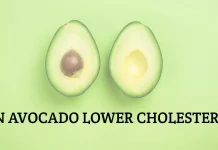In the context of stroke recovery, chili peppers may not be the first thing that comes to mind as a potential ally for many of us. We often associate these fiery little spices with adding heat to our meals. Recent research has unveiled the surprising benefits of chili peppers, specifically their active component, capsaicin, in supporting stroke recovery.
Understanding Stroke and the Need for Recovery
Before delving into the role of chili peppers, let’s grasp the basics of a stroke and why recovery matters. A stroke occurs when blood flow to the brain is interrupted due to a blocked blood vessel (ischemic stroke) or a ruptured blood vessel (hemorrhagic stroke). This interruption can harm brain cells, resulting in various physical and cognitive difficulties.
Stroke recovery is crucial because it helps survivors regain lost functions and improve their quality of life. Stroke recovery encompasses rehabilitation, therapy, and occasionally dietary modifications that contribute to the healing process. It is where chili peppers can make a difference.
The Chili Pepper’s Secret Weapon: Capsaicin
Capsaicin is the compound responsible for the spicy kick in chili peppers. Beyond adding flavor and heat to dishes, capsaicin has some remarkable properties that can benefit stroke recovery:
- Pain Relief: Stroke survivors often experience various types of pain, including muscle discomfort. Capsaicin is known for its pain-relieving properties, making it a potential natural remedy to alleviate post-stroke pain.
- Anti-Inflammatory Effects: Inflammation can exacerbate the damage caused by a stroke. Capsaicin’s anti-inflammatory properties may help reduce inflammation in the brain and promote healing.
- Improved Blood Flow: Capsaicin can also dilate blood vessels, potentially enhancing blood flow to the brain. This improved circulation is vital for the brain’s recovery process.
- Neuroprotection: Capsaicin, a compound found in chili peppers, may have neuroprotective effects, potentially shielding brain cells from further damage, according to some studies.
Incorporating Capsaicin into Your Diet for Stroke Recovery
Now that we understand how capsaicin in chili peppers can support stroke recovery, the next question is how to incorporate it into your diet:
- Spicy Dishes: If you enjoy spicy foods, adding chili peppers or hot sauce to your meals is a delicious way to benefit from capsaicin.
- Capsaicin Supplements: Capsaicin supplements are available in various forms, including capsules and topical creams. Before using supplements, it’s essential to consult with a healthcare professional.
- Cooking with Chili Pepper Oil: Chili pepper-infused oils can be used for cooking, sautéing, or drizzling over dishes to add a hint of heat and capsaicin.
- Capsaicin Creams: Some stroke survivors use capsaicin-containing creams for topical application to alleviate muscle pain and discomfort.
A Note of Caution
While capsaicin offers promising benefits for stroke recovery, exercise caution, particularly if you have a sensitive stomach or specific medical conditions. Start with small amounts and gradually increase your intake. Always consult your healthcare provider before making significant dietary changes or using capsaicin supplements.
Conclusion
Chili peppers are rich in capsaicin content and can assist in stroke recovery. While they may not be a standalone solution, they can be a flavorful addition to your post-stroke journey toward healing and improved well-being.
Frequently Asked Questions (FAQs)
What is capsaicin, and how does it relate to chili peppers?
Capsaicin is a natural compound developed in chili peppers responsible for their spicy flavor.
Can capsaicin help with pain relief during stroke recovery?
Yes, capsaicin has pain-relieving properties that may alleviate discomfort during stroke recovery.
Are there any side effects or risks associated with capsaicin consumption?
Possible side effects include irritation or a burning sensation. Consult a healthcare provider for concerns.
How can I add capsaicin to my meals if I’m not used to spicy food?
Gradually introduce small amounts of capsaicin-rich foods to your diet to build tolerance.
Can particular chili pepper varieties significantly benefit stroke recovery?
While capsaicin levels differ, numerous chili pepper varieties can benefit stroke recovery.
Can capsaicin supplements or creams be beneficial for stroke recovery?
Use capsaicin supplements and creams under professional guidance to maximize their potential benefits.
How does capsaicin affect blood circulation, and why is it essential for stroke recovery?
Capsaicin can dilate blood vessels, potentially improving blood flow, vital for stroke recovery.
Is using capsaicin creams topically for post-stroke muscle pain safe?
Topical capsaicin creams can help with muscle pain, but consult your healthcare provider before use.
Can capsaicin be integrated into a stroke survivor’s long-term dietary plan?
Indeed, you can incorporate capsaicin into a balanced post-stroke diet with guidance from healthcare professionals.
Should I consult my healthcare provider before incorporating capsaicin into my post-stroke recovery plan?
Yes, consulting your healthcare provider is essential before making dietary or treatment changes.











